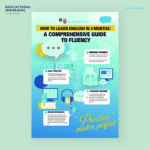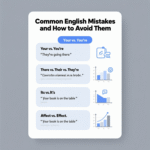Switching careers can feel like standing at the edge of a cliff, peering into the unknown. The fear of losing years of experience or starting from scratch can be daunting. However, with strategic planning, leveraging existing skills, and embracing a proactive mindset, switching careers without starting over is not only possible but can also be a rewarding and empowering journey. We understand the challenges and uncertainties that come with this decision, and this guide is designed to provide a detailed roadmap for transitioning into a new career while maximizing your existing expertise and minimizing setbacks. Whether you’re seeking greater fulfillment, better work-life balance, or new challenges, this 8000-word guide will equip you with the tools, strategies, and insights needed to make a successful career pivot.
- Why Consider a Career Switch?
- Assessing Your Current Skills and Experience
- Choosing the Right Career Path
- Building a Strategic Plan for Your Career Switch
- Step 1: Upskilling and Education
- Step 2: Networking and Building Connections
- Step 3: Tailoring Your Resume and Cover Letter
- Step 4: Gaining Practical Experience
- Navigating Challenges in a Career Switch
- Real-Life Success Stories
- Long-Term Strategies for Career Success
- Recommendations and Suggestions
- Frequently Asked Questions (FAQs)
Why Consider a Career Switch?
The decision to switch careers often stems from a desire for change—whether it’s escaping a stagnant job, pursuing a passion, or adapting to evolving industry trends. According to a 2023 survey by LinkedIn, over 60% of professionals have considered changing careers at some point, with key motivators including better pay, improved work-life balance, and alignment with personal values. The modern workforce is more dynamic than ever, with technology, automation, and shifting economic landscapes creating new opportunities. However, the fear of starting over can hold many back. We believe that with the right approach, you can pivot to a new field without sacrificing your hard-earned experience.
Common Reasons for Switching Careers
-
Job Dissatisfaction: Feeling unfulfilled or disengaged in your current role.
-
Industry Shifts: Technological advancements or economic changes rendering your current field obsolete.
-
Personal Growth: A desire to pursue a passion or align your career with your values.
-
Financial Goals: Seeking higher earning potential or more stable income.
-
Work-Life Balance: Prioritizing flexibility, remote work, or reduced stress.
Understanding your motivation is the first step in creating a clear plan for your career switch. By identifying what drives you, we can tailor strategies to ensure a smooth transition.
Assessing Your Current Skills and Experience
Before embarking on a career switch, we recommend conducting a thorough self-assessment to identify your transferable skills, strengths, and areas for growth. This process allows you to map your existing expertise to the requirements of your target industry, ensuring you don’t start from square one.
Conducting a Skills Inventory
A skills inventory is a structured way to catalog your abilities and experiences. Here’s how we suggest approaching it:
-
Hard Skills: These are technical abilities specific to your current role, such as project management, data analysis, coding, or financial modeling. For example, if you’re a marketing professional, your skills in SEO, content creation, or analytics are highly transferable to roles in digital media or e-commerce.
-
Soft Skills: Communication, leadership, problem-solving, and adaptability are universally valued. A 2024 report by the World Economic Forum highlighted that 80% of employers prioritize soft skills when hiring for diverse roles.
-
Industry-Specific Knowledge: Even if your industry seems unrelated, knowledge of processes, regulations, or client management can be repurposed. For instance, a teacher’s classroom management skills can translate to corporate training or HR roles.
-
Achievements: Document measurable accomplishments, such as increasing sales by 20% or streamlining operations, to demonstrate your value to potential employers.
Action Step: Create a spreadsheet listing your skills, categorizing them as hard, soft, or industry-specific. Cross-reference these with job descriptions in your target field to identify overlaps.
Identifying Transferable Skills
Transferable skills are the cornerstone of switching careers without starting over. These are abilities that apply across industries and roles. For example:
-
Project Management: Coordinating tasks, managing timelines, and leading teams are valuable in fields like IT, construction, or event planning.
-
Communication: Writing reports, presenting ideas, or negotiating contracts are skills needed in marketing, sales, or consulting.
-
Analytical Thinking: Data interpretation or problem-solving is critical in finance, tech, or operations.
We recommend reviewing job postings in your desired field to pinpoint which skills are in demand. Tools like LinkedIn’s Skills Insights or O*NET Online can help identify competencies that align with your target career.
Choosing the Right Career Path
Selecting a new career path requires careful consideration of your interests, values, and market trends. We advocate for a data-driven approach combined with self-reflection to ensure your new career aligns with both your personal goals and professional aspirations.
Researching High-Demand Industries
Certain industries are more welcoming to career switchers due to their growth and demand for diverse skill sets. According to the U.S. Bureau of Labor Statistics (BLS), the following sectors are projected to grow significantly through 2030:
-
Technology: Roles like software development, cybersecurity, and data analysis offer high earning potential and flexibility. Many tech roles value certifications over formal degrees, making them accessible for career switchers.
-
Healthcare: Positions such as medical coding, healthcare administration, or telehealth support are in demand, with transferable skills like organization and communication being key.
-
Green Energy: Sustainability roles in renewable energy or environmental consulting are growing as companies prioritize eco-friendly practices.
-
Education and Training: Corporate training, e-learning development, and instructional design are ideal for those with teaching or communication experience.
Action Step: Use platforms like Glassdoor, Indeed, or LinkedIn to research job growth, salary ranges, and required qualifications in your target industry.
Aligning with Your Interests and Values
A successful career switch aligns with your passions and lifestyle goals. We suggest using tools like the Myers-Briggs Type Indicator or StrengthsFinder to gain insights into your personality and strengths. Ask yourself:
-
What tasks energize you?
-
Do you prefer collaborative or independent work?
-
Are you drawn to creative, analytical, or hands-on roles?
For example, if you enjoy problem-solving and have a background in logistics, a role in supply chain analytics might be a natural fit. If you’re passionate about helping others, transitioning from customer service to social work could be rewarding.
Building a Strategic Plan for Your Career Switch
A well-structured plan is essential for switching careers without starting over. We outline a step-by-step approach to guide you through the process, from upskilling to networking and applying for roles.
Step 1: Upskilling and Education
While you don’t need to start over with a four-year degree, targeted upskilling can bridge gaps between your current expertise and the requirements of your new career. Here’s how to approach it:
-
Online Courses: Platforms like Coursera, Udemy, and edX offer affordable courses in fields like data science, UX design, or digital marketing. For example, Google’s Career Certificates can prepare you for roles in IT or project management in as little as six months.
-
Certifications: Industry-recognized certifications, such as PMP (Project Management Professional) or AWS Certified Solutions Architect, enhance your credibility. A 2024 study by CompTIA found that 70% of tech hiring managers prioritize certifications over degrees for mid-level roles.
-
Bootcamps: Coding bootcamps or UX design programs offer intensive, job-focused training. General Assembly and Springboard are reputable options with strong job placement rates.
-
Micro-Credentials: Short, focused programs like LinkedIn Learning’s Skill Badges allow you to demonstrate niche skills.
Action Step: Identify 2-3 skills critical to your target role and enroll in a relevant course or certification program. Allocate 10-15 hours per week to learning.
Step 2: Networking and Building Connections
Networking is a powerful tool for career switchers, as it opens doors to opportunities and provides insider insights. We recommend the following strategies:
-
LinkedIn Optimization: Update your LinkedIn profile to reflect your career transition. Use a headline like “Transitioning Marketing Professional | Aspiring Data Analyst | Skilled in Analytics & Communication” to signal your pivot. Share content related to your new field to attract recruiters.
-
Informational Interviews: Reach out to professionals in your target industry for 15-20 minute conversations. Ask about their career paths, challenges, and advice for newcomers. A 2023 survey by CareerBuilder found that 65% of job seekers who conducted informational interviews received job referrals.
-
Professional Associations: Join industry-specific groups, such as the American Marketing Association or the Society for Human Resource Management, to attend events and connect with peers.
-
Alumni Networks: Leverage your college or company alumni networks to find mentors or job leads.
Action Step: Identify 5-10 professionals in your target field on LinkedIn and send personalized connection requests. Schedule at least one informational interview per week.
Step 3: Tailoring Your Resume and Cover Letter
Your resume and cover letter must highlight your transferable skills and demonstrate your fit for the new role. We suggest:
-
Customized Resumes: Tailor your resume for each job application, emphasizing relevant skills and achievements. Use action verbs like “streamlined,” “optimized,” or “led” to showcase impact.
-
Skills-Based Format: If your experience isn’t directly related, use a functional or combination resume to highlight skills over chronology.
-
Cover Letter Narrative: Explain your career switch in your cover letter, focusing on why you’re passionate about the new field and how your background adds value. For example: “As a project manager with 10 years of experience in logistics, I’ve honed skills in process optimization and stakeholder communication, which I’m excited to apply to a career in data analysis.”
Action Step: Create a master resume with all your skills and experiences, then customize it for each job application. Use tools like Jobscan to align your resume with job descriptions.
Step 4: Gaining Practical Experience
Hands-on experience can make you a competitive candidate, even without a traditional background in the field. We recommend:
-
Freelancing: Platforms like Upwork and Fiverr allow you to take on small projects in your target field, such as writing blog posts for content marketing or designing mockups for UX roles.
-
Volunteering: Offer your skills to nonprofits or small businesses. For example, a career switcher moving into graphic design could create marketing materials for a local charity.
-
Side Projects: Build a portfolio of relevant work. A budding web developer might create a personal website, while an aspiring data analyst could publish a data visualization project on GitHub.
-
Internships or Apprenticeships: Some industries, like tech and finance, offer internships for career switchers. Google’s Career Certificates, for instance, include internship opportunities with partner companies.
Action Step: Commit to one freelance or volunteer project within the next month to build your portfolio and gain references.
Navigating Challenges in a Career Switch
Switching careers is not without obstacles, but we can address these proactively to ensure success.
Overcoming the Experience Gap
Lack of direct experience is a common concern for career switchers. To bridge this gap:
-
Highlight Transferable Achievements: Frame your past accomplishments in terms relevant to the new role. For example, a retail manager transitioning to HR might emphasize conflict resolution and team training.
-
Leverage Adjacent Roles: Start with roles that are a step closer to your current experience. A journalist might transition to content marketing before aiming for a broader marketing strategy role.
-
Showcase Learning Agility: Employers value candidates who can learn quickly. Highlight your ability to adapt by referencing past instances where you mastered new skills or tools.
Managing Financial Uncertainty
A career switch may involve a temporary pay cut or investment in education. To mitigate financial risks:
-
Build a Financial Buffer: Save 3-6 months of living expenses before transitioning.
-
Explore Part-Time Roles: Consider part-time or contract work in your new field while maintaining your current job.
-
Negotiate Salaries: Research salary ranges using tools like Payscale or Glassdoor to ensure fair compensation. A 2024 report by Robert Half found that 55% of employers are open to negotiating salaries for candidates with transferable skills.
Addressing Age or Industry Stereotypes
Career switchers, particularly those over 40, may worry about being perceived as “too old” or “too entrenched” in their current field. We counter this by:
-
Emphasizing Adaptability: Highlight your willingness to learn and embrace new challenges.
-
Showcasing Modern Skills: Proficiency in current tools, such as cloud platforms or social media, can dispel stereotypes.
-
Focusing on Value: Position yourself as someone with a unique blend of experience and fresh perspective.
Real-Life Success Stories
To inspire your career switch, we share stories of individuals who successfully pivoted without starting over:
-
From Teaching to Tech: Sarah, a former high school teacher, leveraged her communication and organizational skills to become a technical writer. She completed a six-month online course in technical communication and landed a role at a SaaS company, increasing her salary by 30%.
-
From Finance to Sustainability: Mark, a financial analyst, transitioned to a role in green energy consulting by earning a certification in environmental management. His analytical skills and industry knowledge made him a standout candidate.
-
From Retail to UX Design: Emily, a retail manager, used her customer service experience to pivot into UX design. She completed a bootcamp, built a portfolio of mockups, and secured a junior designer role within a year.
These stories illustrate that with determination and strategic planning, switching careers without starting over is achievable.
Long-Term Strategies for Career Success
Once you’ve made the switch, we recommend focusing on long-term growth to solidify your position in your new field:
-
Continuous Learning: Stay updated with industry trends through blogs, webinars, and conferences. For example, tech professionals can follow publications like TechCrunch or attend events like CES.
-
Mentorship: Seek mentors who can guide you through the nuances of your new industry.
-
Performance Metrics: Set measurable goals, such as completing a major project or earning a promotion within two years, to track your progress.
Recommendations and Suggestions
To ensure a successful career switch, we suggest:
-
Start Small: Begin with low-risk steps, like taking a single course or attending a networking event, to build confidence.
-
Stay Persistent: The transition may take 6-18 months, so maintain focus and celebrate small wins.
-
Seek Feedback: Regularly ask for input from mentors, peers, or hiring managers to refine your approach.
-
Invest in Personal Branding: Create a professional website or portfolio to showcase your skills and projects.
-
Balance Passion and Pragmatism: Choose a career that excites you but also offers stability and growth.
Frequently Asked Questions (FAQs)
-
Can I switch careers without a degree in the new field?
Yes, many industries value skills and certifications over formal degrees. Focus on building a portfolio and gaining practical experience. -
How long does it take to switch careers?
The timeline varies, but most transitions take 6-18 months, depending on the skills gap and your commitment to upskilling. -
What are the best industries for career switchers?
Technology, healthcare, and education are welcoming due to high demand and transferable skill opportunities. -
How do I explain my career change to employers?
Use your cover letter and interviews to highlight transferable skills and your passion for the new field. -
Can I switch careers later in life?
Absolutely. Many professionals switch careers in their 40s or 50s by leveraging their extensive experience and adaptability. -
What if I can’t afford to take a pay cut?
Explore part-time or freelance roles in your new field to maintain income while transitioning. -
How do I identify transferable skills?
Conduct a skills inventory and compare your abilities to job descriptions in your target industry. -
Are online courses worth it for career switching?
Yes, platforms like Coursera and Udemy offer affordable, industry-relevant training that employers recognize. -
How important is networking for a career switch?
Networking is critical, as it provides insights, referrals, and access to unadvertised job opportunities. -
What if my current skills don’t align with my dream career?
Upskill through targeted courses or certifications to bridge the gap, and focus on adjacent roles to gain entry. -
How do I stay motivated during a career switch?
Set short-term goals, connect with supportive peers, and track your progress to maintain momentum. -
Can volunteering help with a career switch?
Yes, volunteering builds experience, expands your network, and demonstrates commitment to your new field. -
What tools can help me research new careers?
Use LinkedIn, Glassdoor, O*NET Online, and BLS data to explore job trends and requirements. -
How do I handle rejection during a career switch?
Treat rejections as learning opportunities, seek feedback, and refine your applications or skills. -
Is it possible to switch careers multiple times?
Yes, with each switch, you build a diverse skill set that can make future transitions easier.












